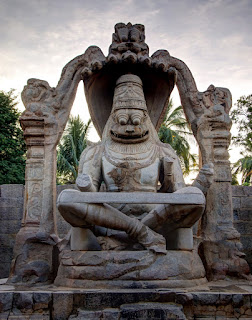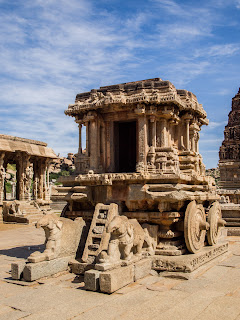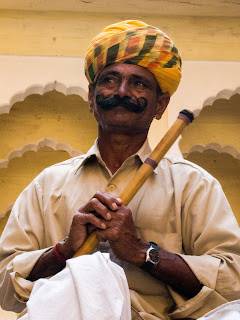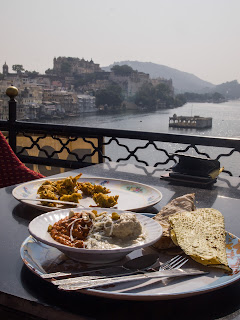My flight to Kathmandu was to pass
through New Delhi with an eight hour overnight layover. Ever the
cheap-ass, I was determined to crash in the airport, even though I wasn't sure
that was possible, and I'm surprised now at my audacity, as I didn't even bother
with a contingency plan. I think I was inspired by the fields of human
bodies I've seen strewn about the ground as I've passed my weeks in India,
mostly in places of transit. If Indians can do it, then by Jove, so can
I! Often covered entirely with little
more than a shawl, and on hard concrete no less, I am surprised I never tripped
on one of the many impromptu Indian nappers I've come across. I’ve gotten
very close to doing so.
There was a nasty snag in my plan, in that my bag wasn’t
scheduled to be forwarded to Kathmandu, which meant I had to exit the airport
security zone to retrieve it. A nice man
at an information desk said I should be able to come back in and use the
lounge, but the stern Sikh security guard I bumped into later insisted otherwise,
and then I was stuck outside (guards and cops are often Sikhs, and they are
often quite large and very intimidating).
Dismayed, but determined not to go through the expense and hassle of two
cab rides and a hotel for a measly couple of hours of sleep, I slipped into the
visitors section, unfurled my shawl onto a corner of cold tile, and – once more
inspired by India’s intrepid sleepers – went into hibernation mode using ear
buds and my hat to block out the world.
The tiles were hard, and the nearby motion sensor doors let whole drafts
of cold winter air into the room. All
the while I was expecting someone to come tell the scruffy homeless white guy
curled up in the corner he couldn’t be there, but the hours slipped wearily by,
alternatingly on my tender left and right sides, and I got up in time to check
into my flight unperturbed.
As I dismounted the vehicular staircase heading from the
plane to the airstrip, I was surprised at how very temperate the morning air of
Kathmandu’s winter could be. Seeing the
bony white spine of the Himalayas from the airplane high above gave me a thrill
but also chilled me. My host, a great French
woman named Sophie, insisted she meet me at the airport, as too many of her
guests have gotten lost trying to navigate the bustling mess of Kathmandu’s
transit system. The busses proved to be
just as crowded as Indian busses, but with the added fun of being built for
considerably smaller human beings. Or
hobbits perhaps. I was like Gandalf
hunched over in a moving hobbit hole full of little brown Frodos wearing
facemasks to filter out the pollution and the dust.
In the bus and on the streets, the Nepalese dislodged some
of my expectations. Despite being so
historically cut off from the world, the Kathmandu Nepalese were dressed in a
much more western way than the people in any of the Indian cities I had
visited. Lots of V-neck sweaters and
converse shoes. The dress also somewhat
masked the extreme poverty of the country.
Even the poor need to stay warm, and I think all the layering with
sweaters, scarves, and hats lends itself to a blurring of social caste, at
least on the level of visual inspection.
I thought of an episode of 30 Rock where Liz Lemon laments New York’s
winter: “I
hate January, it's dark and freezing and everyone's wearing bulky coats. You
can do some serious subway flirting before you
realize the guy is homeless.”
Familiar
Bollywood songs in rickshaws and restaurants proved to be one of the many
strong cultural tethers between Nepal and the country I had just left, but I
was finding myself frustrated at having to start from scratch, despite the
similarities. The food, the religion,
and even the temperaments were familiar to me, but I would say all presented
itself more mildly than their brightly colored and spicy neighbor down
below. I think I was a little
disenchanted by the contrast at first, but I think I’m starting to fall for
it. It’s a slow burn.
My
tradition, as I’m sure is the case with many, is to start my explorations of a
city at its heart, but this is a strategy I’m considering revising. In Kathmandu’s case, the span between Durbar
Square – the old royal complex – and the tourist village to the north embedded in Thamel prove to be the densest center for commerce and tourism. Despite the majesty of the palace and the
energy and flavor of the markets, I found myself out of place and out of
patience with the touts, shopkeepers, and would-be tour guides that are so
abound where the tourists spend their money.
The
next morning I headed straight for Pashupatinath, regarded by many followers of
Shiva as one of the holiest places on Earth.
You wouldn’t guess that from the state of the grounds leading to it,
littered with trash occasionally piled into heaps and set ablaze. Dodging the plastic smoke made me want to
invest in one of those cotton face masks that are so fashionable here. Entering the complex, though, it becomes
clear that not all of the hazy smoke stacks floating above the temple tops
emanate from trash piles. Maybe six
steps up from the water on one of the ghats, I spied a man stoking the flames
of a pyre with a long rod, and a human foot flopped limply out from between the
timbers. Scanning up and downstream, I
realized this particular smokestack was just one of several funeral pyres
dotting the banks of the river. It is
believed that to have your remains scattered here frees your immortal soul form
the cycle of reincarnation. It is
illegal now, but widows used to join their husbands here in immolation, in a
ritual suicide known as sati.
I
was a bit uneasy strolling about such an intense and emotionally charged place,
especially with a camera dangling from shyly from my side, but the
administration made a special effort to be welcoming, emphasizing the
importance of tourist dollars in the site’s maintenance. Most of the photos I shot, I shot from the
hip, not wanting to be prying. A
Japanese tourist was getting very conspicuous shots of a body being prepared
for cremation – they seemed to be washing the corpse’s face or perhaps
attempting to get it to imbibe – and a mourner assailed the photographer with
curses and the restrained violence of a fist in the air. I took that as a cue to explore away from the
ghats, as mesmerizing as they were. I suspect
the sad serenity of the scene there will haunt me always and despite the
bleakness, I was very in love with the place.
Up
the hill on the opposite bank, are countless rows of stone shrines, each
containing a Shiva linga phallus. The
shrines happen to be a popular hangout for sadhus and monkeys alike. Sadhus like to party, and I was told a yearly
festival sees that they get as much liquor and marijuana as their wrinkled old
faces can handle – all for free. The
hill also contains a wildlife enclosure where I saw some squat deer sitting
among sunbeams and a gorgeous black buck with spindly helix-shaped horns gallivanting
along the ridge.
Half
an hour north by foot, I had my first full introduction to Tibetan Buddhism, in
the shape of the Boudhanath: an enormous half dome shrine, called a stupa,
topped with a golden spire and four pairs of Buddha’s eyes gazing in each
direction. Thousands of brightly colored
prayer flags on streamers fly in the wind and converge at the base of the
spire. At the base of the monument on
every side is a vast series of prayer wheels, bronze colored cylinders etched
with mantras and spun by hand by the hundreds of pilgrims circling the giant
stupa, always clockwise. Outside and
inside the flowing ring of Buddhists, more Buddhists stand with flat shields on
the palms of their hands, protecting them from abrasion as they prostrate
themselves on the ground repeatedly in prayer.
Boudhanath is regarded as the most important Tibetan Buddhist monument
outside of Tibet and is frequented often by exhiles.
After
some tasty Nepalese noodles, a dish called Thukpa, I found myself wandering the
markets further north of the stupa. I
became entranced by a wild sound emanating from a nearby monastery and I kicked
off my shoes at the entrance to investigate.
As soon as I entered, the sound suddenly stopped, increasing my timidity
as I looked across several rows of maroon clad Buddhists fanning to my left and
right, all deeply focused on long scrolls.
My eyes adjusted blinkingly to the lack of light and I was stunned by
the colors of the place: drenched in bright red, and accented with a generous
amount of gold, a bit of white, and a smattering of just about every other color
there is. A smiling monk beckoned me to
sit and then administered to me a spoonful of blessed water and a glass of hot
chai. From my cushion in the corner of
the monastery I sipped my tea and listened in wonder as the wall of sound that
summoned me moments before slowly reconstructed itself before me.
First,
a throaty grumble from somewhere near the front of the chamber, a practiced
chant that became echoed by each of the monks down the rows. This continues hypnotically for a few minutes
until two pairs of monks with large unwieldy horns blow into them, loosing a
discordant howl, deafening in their unison.
A pair of monks by the doors banged on heavy drums with large mallets
while the others joined in with cymbals, bells, double-sided hand drums, and
fluttering smaller horns. Banging,
crashing, wailing, the carefully timed cacophony is terrifying and beautiful
all at once. It’s a stampede of
elephants, it’s the beginning of time, it’s the awful grace of a controlled demolition
seen in slow motion, and it leaves the uninitiated in a state of stupor when it
all ends more suddenly than it began.
Like
a vampire, the cold descends upon the town at night, rolling down from the
chilly Himalayas. In the span of an hour
or two I would have to go from having my sleeves rolled up to wearing every
shirt I brought with me then tightly bound in my Rajasthani scarf and
shawl. The air is bad in Kathmandu and
the water’s worse, tinged with brown even after a boil. Muddy glacier runoff and just as cold. I was naked and watching the glacier water
trickle from the shower head, chuckling aloud while wondering about my
bravery. The neighbors upstairs would
have heard a rather loud, “Oh sweet Jesus!” and I then figured I could probably
get by the rest of my time in Nepal without showers, save for a daily foot
wash.
Oh
my poor feet. I’m not halfway through my
adventure through Asia and they already barely resemble feet. An unfortunate patchwork of pink, purple, and
white. Scabbed from shitty sandals. Lumpen from ceaseless wandering and a
tightwad’s aversion to taxi cabs.
The glacial shower – I forgot to mention – was enjoyed by romantic
candlelight. Nepal, in order to afford
petrol, sells off its electricity to India.
The electricity sent south, however, is not surplus, which means the
whole country goes off the grid every day for about 10 hours. If businesses can afford it, they keep the
lights on with generators, otherwise it’s candle time or shop’s closed. Much of my writing in Nepal so far has been
by the soft glow of a candle and the burning tip of sandalwood incense. It takes some getting used to.











































